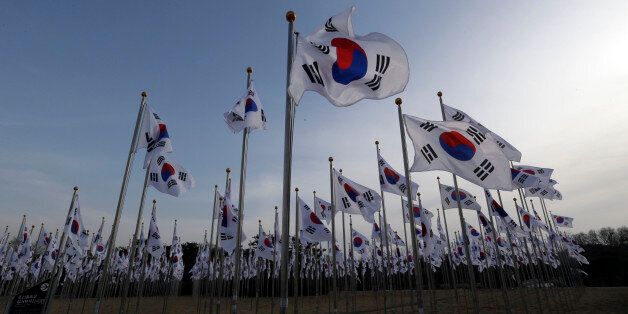Reality Report on the Korean Dream: Can Foreign Workers Succeed in Korea as of June 2025?
Korean Dream
1. Introduction
1.1 Purpose and Scope of the Report
This report aims to comprehensively analyze the reality of the ‘Korean Dream’ experienced by foreign workers in South Korea as of June 2025. The concept of ‘success’ extends beyond mere economic gain to encompass social integration, quality of life, and long-term settlement possibilities. By shedding light on changes in Korean government policies, labor market trends, and the practical challenges and opportunities faced by foreign workers, this report seeks to present a realistic picture of how successfully they can settle and thrive in Korean society. This analysis considers the experiences of various types of foreign workers, from highly skilled professionals to non-professional workers and international students, based on the latest available data.
1.2 Methodology
This report conducts an in-depth analysis by meticulously reviewing the provided research materials and extracting key data. Each data point is presented with its significance, along with detailed background and context regarding its impact on the lives of foreign workers in Korea. Special attention is paid to identifying the gaps between policy advancements and the actual realities experienced by foreign workers on the ground, exploring the causes of these discrepancies and their ripple effects. The interconnectedness of data, hidden patterns, causal relationships, and broader implications are thoroughly discussed to facilitate a comprehensive understanding of complex socioeconomic phenomena. This approach enables an objective and balanced assessment of Korea’s foreign labor policies and social integration efforts.
2. Current Status and Demographics of Foreign Workers
2.1 Number of Foreign Residents and Employment Rate
South Korea’s foreign population has been steadily increasing, reaching a record high of 1.561 million foreign residents aged 15 and over by the end of 2024. This represents a 9.1% increase from the previous year, marking the sharpest rise since 2012.1 This growth indicates Korea’s deepening reliance on foreign labor.
In terms of employment, the foreign employment rate in 2024 was 64.7%.2 This is a 0.2 percentage point increase from 2023, resulting from an increase of 87,000 employed foreign nationals.3 The total number of employed foreign nationals in 2024 reached 1.01 million, an increase of 87,000 (2 percentage points) from 2023.4 These figures show that a significant portion of foreign residents in Korea are economically active.
Looking at the broader employment market, as of May 2025, Korea’s overall employment rate (for those aged 15 and over) was 63.8%, up 0.3 percentage points year-on-year, and the employment rate for those aged 15 to 64 reached 70.5%, a 0.5 percentage point increase, marking a monthly record high since statistics began.5 This reflects the robust growth of the overall Korean labor market. However, employment in the manufacturing and construction sectors showed a decline 5, which could disproportionately affect foreign workers who are often employed in these fields. While the overall increase in employment is a positive sign, these sectoral shifts add complexity to foreign worker employment opportunities.
2.2 Demographics and Major Countries of Origin
The composition of Korea’s foreign resident population is concentrated in specific groups. As of the end of 2024, 57.8% of foreign residents were male, primarily entering Korea for employment purposes. In contrast, females accounted for 42.2%, mainly entering for marriage or education.1 This gender distribution suggests that foreign workers’ entry pathways and the socioeconomic opportunities and challenges they face may differ by gender.
By nationality, individuals from Asian countries constitute an overwhelming majority. As of 2024, 91% of all foreign residents were from Asia, with ethnic Koreans from China (31.6%), Vietnamese (15.0%), and Chinese nationals (8.6%) making up the largest proportions.1 This indicates that Korea’s foreign population heavily relies on groups sharing specific cultural backgrounds, providing important implications for shaping social integration efforts. Foreigners accounted for 5.2% of Korea’s total population in 2024, and between 1990 and 2020, Korea’s migrant population grew by 3.9%, the second-highest growth rate globally.6 These statistics demonstrate Korea’s rapid transformation into a multicultural society.
2.3 Geographical Distribution
The geographical distribution of foreign residents is concentrated in Korea’s major cities and industrial areas. As of the end of 2024, 59% of all foreign residents lived in the Seoul Metropolitan Area (including Seoul, Gyeonggi Province, and Incheon).1 This concentration in the capital region increases demand for housing, infrastructure, and social services, while potentially exacerbating labor shortages in provincial areas. This concentration of the foreign population strengthens the multicultural characteristics of specific regions within Korean society, while also leading to an imbalance in the distribution of foreign workers across regions.
3. Employment Market Opportunities and Accessibility
3.1 Key Industries and Occupations
The Korean employment market for foreign workers shows distinct differences between non-professional and skilled/professional sectors.
Non-Professional Occupations (E-9 Visa):
Holders of the Non-professional Employment (E-9) visa are primarily concentrated in ‘3D jobs’ (difficult, dangerous, and dirty) that Koreans tend to avoid.8 In 2024, 45.6% of foreign wage workers were employed in mining and manufacturing, followed by wholesale, retail, accommodation, and food services (18.9%), construction (10.6%), and agriculture, forestry, and fishing (8.3%).1 This indicates a continuous demand for foreign labor in specific sectors of the Korean economy.
However, on May 15, 2025, the Ministry of Employment and Labor expanded the range of jobs available to E-9 visa holders to include parcel delivery, restaurants, and hotels/condominiums.10 This measure aims to alleviate chronic labor shortages in small businesses, specifically expanding kitchen assistant duties in restaurants to include serving, and allowing parcel delivery workers to perform sorting in addition to loading and unloading.10 This expansion of occupations provides new employment opportunities for non-professional foreign workers and represents the government’s policy response to changing demands in the Korean labor market. It opens up possibilities for foreign workers to find jobs in the service sector beyond traditional manufacturing.
Skilled and Professional Occupations (E-7-1 Visa, etc.):
Korea’s tech industry is projected to contribute 25% to the national GDP by 2025, with artificial intelligence (AI), cloud computing, and cybersecurity driving this growth.11 These high-growth industries create a strong demand for highly skilled tech professionals such as backend engineers, front-end developers, AI/ML engineers, and cybersecurity specialists.11 Interestingly, 7 out of 10 Korean companies are willing to hire foreign workers due to a shortage of qualified Korean candidates.11 This indicates a strong ‘pull’ factor for foreign talent in Korea’s advanced industrial sectors.
Notably, major conglomerates like SK Telecom and Hyundai Motor Group are actively recruiting young foreign graduates familiar with Korean culture for full-time office and research positions.12 This trend suggests that the traditional perception of foreign hires, limited to top executives or low-skilled manual laborers, is expanding to include white-collar and research roles.12 The E-7-1 visa is the most popular choice for IT professionals, including software developers and system engineers, offering an initial stay of up to 3 years (renewable) and a pathway to permanent residency, with the possibility of family accompaniment.13 This provides a clear and advantageous path for highly skilled foreign workers to pursue long-term career development and settlement in Korea, suggesting a distinctly different form of the ‘Korean Dream’ compared to non-professional workers.
3.2 Visa Policies and Flexibility
The Korean government is continuously improving its visa policies to attract foreign talent.
F-2 Visa (Highly Skilled Foreigners):
Effective April 2, 2025, the Ministry of Justice introduced a new F-2 visa for highly skilled foreign nationals in high-tech industries such as semiconductors, biotechnology, secondary batteries, displays, robotics, and defense.14 This visa clearly demonstrates Korea’s commitment to strategically attracting specific highly skilled talent to enhance its economic competitiveness. F-2 visa holders can invite dependents, including spouses, underage children, parents, parents-in-law, and even housekeepers, and are eligible for an ‘Immigration VIP Card’ for fast-track immigration processing and priority security checks.14 Such comprehensive family support and administrative convenience serve as significant incentives for highly skilled individuals to relocate to Korea, indicating that Korea is considering not just labor but also the quality of life for talented individuals.
E-9 and H-2 Visa Flexibility:
Significant changes have also been made to the Employment Permit System (EPS) for non-professional workers. From July 28, 2025, foreign workers will be able to work continuously in Korea for up to five years without the obligatory one-month departure.8 This is a crucial improvement that reduces financial burdens and employment gaps for foreign workers, and allows employers to retain skilled labor more stably. Previously, workers had to leave the country for a month to renew their contracts, which caused costs and operational difficulties for businesses.15
Furthermore, employment procedures have been revised, allowing employers to select more suitable candidates from a new list that shows job seekers’ qualifications and career records, rather than just choosing from those who passed a Korean language test.15 Employers can also directly recruit workers through overseas interviews.15 These changes are expected to improve matching between employers and workers, leading to higher job satisfaction and lower turnover rates.
Measures to protect foreign workers’ rights have also been strengthened. Conditions are now specified that allow foreign workers to transfer to other companies in cases of unpaid wages or violations of Korean labor law.8 This is a direct response to past issues where employers often exploited foreign workers by restricting job changes.8 These policy changes are considered significant advancements in enhancing foreign workers’ employment stability and protecting them from exploitation.
Regulations on interregional movement have also been relaxed. Foreign workers (E-9 and H-2 visa holders) residing in the Seoul metropolitan area can now move to jobs in other provinces.19 However, movement from non-metropolitan areas to the Seoul metropolitan area remains restricted.19 This reflects the policy intention to curb overpopulation in the capital region and address labor shortages in provincial areas.
3.3 Recruitment Trends and Challenges
Despite policy improvements for foreign workers, Korea’s economic situation directly impacts employment opportunities. As of June 10, 2025, the number of foreign workers entering Korea with non-professional employment (E-9) visas decreased by 21% compared to the same period last year.20 The manufacturing sector, in particular, saw a 25.8% decrease.20 This decline is attributed to reduced demand for foreign labor due to Korea’s economic slowdown, with the Bank of Korea forecasting a 0.8% economic growth rate.20
This demonstrates that the ‘Korean Dream’ for non-professional foreign workers is highly vulnerable to macroeconomic conditions. While employment stability and flexibility have improved through policy, a decrease in actual employment demand can make it difficult to find new jobs. This phenomenon emphasizes that not only policy efforts but also the overall vitality of the economy are crucial for foreign workers to successfully settle in Korea. The decline in employment in traditional labor-intensive industries like manufacturing directly affects foreign workers who rely on these sectors.
4. Quality of Life and Social Integration
4.1 Income and Wage Gap
Income in Korea is a crucial component of the ‘Korean Dream’ for foreign workers, but the reality is complex. As of May 2025, the average monthly salary in South Korea is approximately 3,900,000 KRW (about 2,846 USD), with a median salary of about 3,500,000 KRW.22 The minimum wage for 2025 is 10,030 KRW per hour (about 7.32 USD), translating to approximately 2,096,270 KRW per month.11 Seoul’s living wage for 2025 is 11,779 KRW per hour, or 2,461,811 KRW per month, which is higher than the national minimum wage.19 This reflects the higher cost of living in Seoul and highlights regional disparities in income and expenses.
However, the majority of foreign workers do not earn the average Korean income. As of March 2025, nearly two-thirds (63%) of foreign workers earned less than the national average monthly salary of 3,330,000 KRW.1 More than half (51.2%) of foreign wage earners received between 2 million and 3 million KRW per month, while 37.1% earned more than 3 million KRW.1 In contrast, 8.4% earned between 1 million and 2 million KRW, and 3.3% earned less than 1 million KRW.1 International students, in particular, constitute a significant portion of the lowest income bracket, indicating that they may face financial difficulties alongside their studies.1
On the other hand, high-income earners (over 3 million KRW per month) are primarily composed of permanent residents (55.2%) and overseas Koreans (46.1%).1 This suggests that long-term residency status or ethnic ties can lead to greater economic success in Korea. Income varies significantly depending on occupation, experience, education level, and region.22 For example, a general laborer’s average monthly wage is about 2.05 million KRW, while an IT specialist earns about 4.99 million KRW, and an IT director earns 10.61 million KRW.22 This emphasizes that the ‘Korean Dream’ does not mean the same financial success for all foreign workers, and that skill level and career choice critically influence income levels.
Table 1: Monthly Average Wage Distribution for Foreign Wage Workers (as of 2024) 1
| Monthly Average Wage | Proportion of Foreign Wage Workers |
|—|—|
| Less than 2 million KRW | 11.7% (1-2 million KRW: 8.4%, Less than 1 million KRW: 3.3%) |
| 2 million KRW ~ Less than 3 million KRW | 51.2% |
| 3 million KRW or more | 37.1% |
This table clearly illustrates the income distribution of foreign workers, revealing that the majority fall into income brackets lower than the average Korean income. This is essential baseline data for understanding the economic reality of foreign workers in Korea.
Table 2: Monthly Average Wages by Major Occupation (as of 2025) 22
| Occupation | Monthly Average Wage (KRW) |
|—|—|
| General Laborer | 2,053,550 |
| Manufacturing | 2,710,000 |
| Construction/Installation | 2,410,000 |
| IT Specialist | approx. 4,989,540 (USD 3,642) |
| IT Director | 10,619,000 |
| CEO | 12,271,700 |
This table provides specific figures for wage disparities by occupation, visually emphasizing the significant income gap between highly skilled and unskilled professions. It clarifies that the ‘Korean Dream’ does not offer the same financial success to all foreign workers, and that an individual’s expertise and industry sector critically influence economic success.
4.2 Housing Conditions
The housing conditions of foreign workers, especially non-professional laborers, are cited as a significant obstacle to the ‘Korean Dream’. A 2021 survey revealed that 99.1% of foreign workers entering through the Employment Permit System (EPS) resided in dormitories provided by their employers, and 74% of these were temporary structures such as containers, prefabricated panels, or prefabricated panels within vinyl greenhouses.26 Of these temporary structures, 56.5% were not even registered as residential facilities with local governments and lacked basic safety features like locks, fire extinguishers, and fire alarms, making them highly vulnerable to privacy and safety issues.26 In agricultural settings, the illegal conversion of vinyl greenhouses or huts into dormitories for foreign workers is rampant.26
These substandard housing conditions gained public attention following the tragic death of a Cambodian worker, Ms. Sokkheng, in December 2020, who died in a vinyl greenhouse dormitory.26 In response, the Ministry of Employment and Labor, starting January 2021, began canceling or denying employment permits to farm owners who provided illegal accommodations such as temporary structures within vinyl greenhouses.27 Furthermore, foreign workers residing in illegal temporary structures can now apply for a change of workplace, strengthening worker protection.26 Despite these policy efforts, a significant number of foreign workers remain exposed to poor and illegal housing conditions, which severely threaten their basic quality of life and safety. Some employers continue to demand that temporary accommodations be recognized as legal housing 27, indicating a large gap between policy and on-the-ground reality. Moreover, official guidelines allow 8-20% of normal wages to be deducted for temporary housing and lodging expenses 26, raising concerns that an exploitative structure persists where workers bear the cost of substandard environments.
4.3 Healthcare and Social Security
South Korea provides a robust social safety net for all residents, including foreign workers. The National Health Insurance (NHIS) system is mandatory for all Korean residents, and foreign workers must enroll within six months of their arrival.28 This ensures that foreign workers have access to basic medical services, which is essential for protecting their health and well-being, a crucial component of the ‘Korean Dream’. Employers contribute approximately 3.825% of the employee’s monthly wages towards health insurance premiums.30
Foreign workers receive the same social security benefits as Korean workers, including the National Pension, Employment Insurance, and Industrial Accident Compensation Insurance.30 For the National Pension, both employers and employees contribute 4.5% of the monthly gross income, and benefits can be received after contributing for at least 10 years and reaching age 62 (to be raised to 65 by 2033).30 Employment Insurance provides financial support during unemployment and opportunities for vocational training, with employers contributing 1.15% to 1.75% and employees 0.9%.30 Industrial Accident Compensation Insurance provides compensation for work-related injuries or illnesses, with employer contribution rates ranging from 0.644% to 18.6% depending on the industry and risk level.30 These comprehensive social security schemes protect foreign workers from financial hardship or health issues while working in Korea.
Notably, the provision of 20 days of paid paternity leave for male workers starting in 2025 is a significant advancement.30 This demonstrates Korea’s efforts to strengthen family-friendly policies and support work-life balance, which is expected to contribute to improving the quality of life for foreign worker families. However, it should be noted that some companies enroll their foreign employees in limited private health insurance plans instead of NHIS to meet legal obligations, and these plans may not sufficiently cover general medical needs beyond accidents.29 This highlights the need for foreign workers to carefully review their insurance policies.
4.4 Language and Cultural Integration
Language barriers are consistently cited as one of the biggest challenges foreign workers face in adapting to Korean society.3 Korean language proficiency is crucial not only for employment opportunities but also for workplace communication and social integration.3 Lack of Korean language skills can also be a cause of discrimination.7
To address these linguistic and cultural barriers and aid the social integration of foreign residents, the Korean government operates the Social Integration Program (SIP).34 SIP provides systematic education on essential knowledge and skills, such as Korean language, Korean culture, and social understanding, necessary for foreign residents to adapt and become independent members of Korean society.34 Completing this program offers significant benefits, including extra points when applying for permanent residency and citizenship, and exemptions from the naturalization test 34, making it a very useful pathway for foreign workers aiming for long-term settlement in Korea.
In addition to SIP, various volunteer groups and civic organizations, such as the Seoul Global Center, JOINUS KOREA, and foreign worker support centers, offer free Korean language education.35 Furthermore, numerous university-affiliated Korean language institutes provide various levels of Korean language courses 36, offering a wide range of formal and informal pathways for foreigners to learn Korean. These efforts contribute to overcoming language barriers and building the social capital necessary for successful integration into Korean society, which is an essential element in realizing the social aspects of the ‘Korean Dream’.
4.5 Discrimination and Human Rights Issues
Despite policy improvements, foreign workers in Korea continue to face widespread discrimination, exploitation, and safety issues, revealing the darker side of the ‘Korean Dream’. In May 2025, the UN Committee on the Elimination of Racial Discrimination (CERD) expressed deep concern over Korea’s response to racial discrimination and the treatment of foreign workers.18 CERD specifically noted an increase in racist rhetoric and hate speech targeting migrants, asylum-seekers, refugees, Muslims, and individuals of Chinese descent, both online and offline.18
The report highlighted severe inequalities experienced by foreign workers. Wage theft occurs more than three times as frequently as for Korean nationals, and nearly half of all foreign workers live in substandard, non-residential facilities.18 Furthermore, the industrial accident fatality rate for foreign workers is almost double that of Korean workers.18 In 2024, nearly half of foreign worker deaths occurred in high-risk sectors like mining and manufacturing 1, and the tragic Aricell battery factory fire in June 2024, which killed 23 people, including 18 foreign nationals, starkly demonstrated the severe safety risks and negligence in safety management faced by foreign workers.9
Human trafficking is also a serious issue. All human trafficking cases officially recognized by the government from 2023 to April 2025 involved foreign workers, mostly victims of labor exploitation, including delayed wage payments.18 These cases illustrate the vulnerable position foreign workers are in.
The reduction of support systems has further exacerbated this vulnerability. Budget cuts in 2024 led to the closure of 44 foreign worker support centers nationwide, making it more difficult for foreign workers to access essential support such as legal aid, medical services, and cultural education.9 This gap in support hinders workers from raising complaints or receiving timely assistance in case of accidents.
Moreover, undocumented foreign workers who visit labor offices for consultation or redress can still be detained and deported.37 This is a serious human rights issue that discourages the most vulnerable workers from reporting exploitation and fundamentally obstructs access to justice. The lack of adequate legal measures to regulate hate speech and xenophobic sentiment against foreigners, despite their worsening prevalence, is also a concern.18 These social and institutional barriers significantly impede foreign workers from feeling a true sense of social belonging and respect in Korea, severely undermining the social aspect of the ‘Korean Dream’.
4.6 Foreign Worker Satisfaction
Despite these challenges, the overall satisfaction of foreign workers with life in Korea appears to be relatively high. A 2024 survey indicated that the majority of foreign residents (over 80%) expressed satisfaction with their overall life in Korea.3 This suggests that economic opportunities, the social safety net, and other positive aspects may offset some of the difficulties.
However, alongside the satisfaction survey, experiences of discrimination provide important insights. 17.4% of respondents reported personally experiencing discrimination, with country of origin, Korean language proficiency, appearance, occupation, or salary cited as major reasons.7 This indicates that despite overall satisfaction, discrimination remains a significant barrier to social integration and that the ‘Korean Dream’ is not an equally applied experience for everyone. Such experiences of discrimination can negatively impact foreign workers’ psychological well-being and their sense of belonging in Korean society.
5. Reality of the Korean Dream: Analysis by Type
The ‘Korean Dream’ experienced by foreign workers in Korea presents a highly heterogeneous reality depending on their occupation type, skill level, and visa status.
5.1 Highly Skilled Professionals and Tech Workers
Opportunities: Korea’s advanced tech industry is rapidly growing in fields such as AI, cloud computing, and cybersecurity, leading to a very high demand for skilled foreign professionals.11 To attract such talent, the Korean government introduced a new F-2 visa for highly skilled foreign nationals in high-tech industries like semiconductors and biotechnology, effective April 2, 2025. This visa actively supports long-term settlement by providing a pathway to permanent residency and allowing accompaniment of dependents including spouses, children, parents, and even housekeepers.14 The E-7-1 (Professional Employment) visa is also a popular choice for IT professionals, offering the possibility of conversion to permanent residency.13
Major conglomerates are actively recruiting young foreign graduates familiar with Korean culture for full-time office and research positions to expand into global markets.12 These occupations offer high wages and clear career advancement opportunities 22, representing the best pathway to realize the economic aspect of the ‘Korean Dream’. They are also included in Korea’s social security system (National Health Insurance, National Pension, etc.), enjoying basic welfare benefits.30
Reality: Highly skilled professionals are the group most likely to comprehensively realize the ‘Korean Dream’ in Korea. A foundation for relatively successful settlement in Korean society is established through stable employment, high income, possibility of family accompaniment, and support for social integration programs and language education.34 However, the average salary for IT professionals in Korea may be lower compared to some developed countries like the US 22, which could be a consideration for some top-tier global talent. Furthermore, Korean language proficiency and cultural understanding remain essential for deep social integration and career advancement.3
5.2 Non-Professional Workers (including EPS)
Opportunities: The Employment Permit System (EPS) provides opportunities to work in manufacturing, construction, agriculture, forestry, and services, which are often avoided by Koreans, serving as an important means to earn income that might be difficult to obtain in their home countries.10 From July 28, 2025, non-professional foreign workers can work continuously for up to five years without mandatory departure, significantly improving employment stability.8 The ease of changing workplaces in cases of unpaid wages or unfair labor law violations is also a crucial advancement that strengthens protection against exploitation.8 They receive the same social security benefits as Koreans, including National Health Insurance.30
Reality: For non-professional workers, the ‘Korean Dream’ tends to function primarily as a means for short-term economic opportunity, namely remittances to their home countries and capital accumulation.38 They earn wages below the Korean average 1 and are exposed to poor housing conditions (mostly unregistered temporary structures provided by employers).26 They face high risks of industrial accidents 9 and are highly susceptible to widespread exploitation, including wage theft, illegal recruitment fees, and human trafficking.18 The closure of foreign worker support centers in 2024 further exacerbated their vulnerability.9
Furthermore, the E-9 visa does not provide a pathway to permanent residency or citizenship 17, making long-term settlement and full social integration difficult. This means that for many, the ‘Korean Dream’ is often a stepping stone to return to their home countries rather than a permanent life in Korea.38 As pointed out in the UN report, hate speech and discrimination against foreigners are major factors hindering their sense of social belonging.18
5.3 International Students and Other Temporary Residents
Opportunities: International students who earn degrees from Korean universities can gain an advantageous position in white-collar and research job recruitment by Korean companies, increasing their potential for transitioning into highly skilled professional roles.12 They have the opportunity to explore employment in Korea after graduation through the D-10 (Job Seeker) visa.13
Reality: International students often fall into the lowest income bracket and may experience financial difficulties.1 They face the challenge of meeting the requirements for appropriate work visas, such as the E-7 (Professional Employment) visa, after graduation, which does not guarantee a long-term career in Korea.12 While efforts are being made to protect human rights, such as the push for universal birth registration for undocumented foreign children 37, the risk of detention and deportation if they become undocumented remains a major source of anxiety.37 Asylum seekers, in particular, face extreme financial and psychological difficulties as the application process takes an average of over four years, during which time they are generally prohibited from working.37
6. Conclusion and Recommendations
6.1 Conclusion
As of June 2025, the reality of the ‘Korean Dream’ experienced by foreign workers in South Korea exhibits a stark ‘dual’ characteristic, varying significantly based on their skill level, occupation, and visa type.
For highly skilled professionals, the ‘Korean Dream’ appears in a very realistic and comprehensive form. The Korean government is implementing proactive policies to attract highly skilled talent in advanced technology sectors, including the introduction of a new F-2 visa and expanded support for permanent residency and family accompaniment.13 These individuals are recognized as drivers of Korea’s economic growth and enjoy high incomes, along with opportunities for long-term career development and social integration.11
However, for non-professional workers engaged in ‘3D jobs’ such as manufacturing, construction, agriculture, forestry, and services, the ‘Korean Dream’ tends to function primarily as a means for short-term economic opportunity, namely remittances to their home countries and capital accumulation.38 Despite policy improvements in employment stability and workplace change flexibility 8, they continue to be exposed to wages below the Korean average 1, poor housing conditions (mostly unregistered temporary structures provided by employers) 26, high risks of industrial accidents 9, and widespread discrimination and exploitation.18 The fact that the E-9 visa does not provide a pathway to permanent residency or citizenship 17 acts as a fundamental limitation, hindering their long-term settlement and full social integration.
Gaps between policy advancements and reality still exist. The Korean government continues its policy efforts to protect foreign workers’ human rights and promote social integration, as evidenced by attracting highly skilled talent, extending stay periods and expanding workplace change flexibility for non-professional workers, and operating social integration programs.8 However, despite these policy advancements, serious issues such as wage theft, illegal housing conditions, industrial accidents, and racial discrimination remain unresolved on the ground.9 In particular, the reduction of support systems, such as the closure of foreign worker support centers in 2024, exacerbates the difficulties faced by vulnerable groups.9
Macroeconomic conditions also significantly impact the feasibility of the ‘Korean Dream’. The slowdown in the Korean economy has led to a decrease in new employment opportunities for non-professional foreign workers, especially in the manufacturing sector 20, demonstrating a reality where policy improvements cannot offset actual employment demand. This suggests that the ‘Korean Dream’ is not solely determined by policy will but is highly sensitive to macroeconomic conditions.
Finally, social acceptance remains a significant challenge. As highlighted in the UN report, hate speech and discrimination against foreigners remain significant issues in Korean society.18 This acts as a major barrier for foreign workers to feel a true sense of social belonging and respect beyond economic success. While overall satisfaction with life is reported to be high 3, experiences of discrimination still exist 7, indicating that the social aspect of the ‘Korean Dream’ is not equally applied to everyone.
In conclusion, as of June 2025, the ‘Korean Dream’ for foreign workers in Korea presents a dual reality: a bright outlook for highly skilled talent, but still many challenges and limitations for non-professional workers. If Korea truly aims to be a ‘Global Korea’, more comprehensive and practical efforts are needed to ensure the human rights and quality of life of all foreign workers and to promote their social integration.
6.2 Recommendations
To address Korea’s demographic and labor shortage issues, and simultaneously realize a true ‘Korean Dream’ where all foreign workers are respected and have fair opportunities, the following recommendations can be considered:
- Mitigate Dual Structure and Adopt an Integrated Approach:
- Strengthen Protection for Non-Professional Workers: To resolve the poor housing conditions of non-professional workers, practical enforcement measures and supervision should be strengthened to penalize the provision of illegal accommodations and mandate the provision of government-approved housing.26 Penalties for wage theft and illegal recruitment practices should be increased, and concrete implementation plans to address issues highlighted in the UN report should be established and transparently reported.18
- Reinforce Support Systems: Reopen foreign worker support centers closed in 2024 and expand comprehensive support services, including language and legal aid, and psychological counseling, to improve accessibility for vulnerable groups.9 Specifically, safe channels should be established for undocumented workers to report labor-related issues and seek redress without fear of detention and deportation, allowing them to assert their rights without apprehension.37
- Consider Expanding Permanent Residency/Citizenship Pathways: For non-professional workers who contribute to Korean society long-term, consider providing limited pathways to permanent residency or citizenship.17 This could foster their commitment to social integration, encourage skill development, and contribute to the long-term vitality of Korean society.
- Improve Social Perception and Eliminate Discrimination:
- Legislate Anti-Discrimination and Education: Enact comprehensive legal measures to regulate racial discrimination and hate speech, and actively enforce them.37 Strengthen public education and campaigns to foster positive perceptions of foreigners and enhance understanding of multicultural society.18
- Embrace Multiculturalism: Ensure that the government’s ‘Global Korea’ vision signifies a genuine transition to a multicultural society beyond mere labor supply, by establishing and implementing long-term strategies that embrace foreign workers as equal members of Korean society.40
- Data-Driven Policy and Monitoring:
- Information Sharing and Transparency: Strengthen the linkage of electronic data systems between the Ministry of Employment and Labor and the Ministry of Justice to more efficiently manage foreign workers’ employment and residency status, and transparently disclose relevant statistics and policy implementation results.8
- Regular Needs Assessments: Conduct regular and in-depth surveys on foreign workers’ quality of life, working conditions, and experiences of discrimination to evaluate policy effectiveness and identify areas for improvement. This is essential for understanding how effectively policies are addressing actual issues on the ground.
These recommendations will contribute to solving Korea’s demographic and labor shortage problems while realizing a true ‘Korean Dream’ where all foreign workers are respected and have fair opportunities.

Sources [바로가기]
EY, “Republic of Korea introduces new F-2 visa for skilled foreign nationals in high-tech industries” (2025)
Dev-Korea, “Korean visa guide for IT engineers and professionals” (2025)
Time Doctor, “What is the average salary in South Korea for 2025?”
Korea Herald, “Number of foreign workers with non-professional employment visas drop 21%” (2025)
Xinhua, “Employment rate for foreign residents in S. Korea reaches 64.7 pct in 2024”
Ministry of Economy and Finance, “Current Employment Situation, May 2025”
성북구청, “Free Korean Language Education”
UN Office at Geneva, “Committee on the Elimination of Racial Discrimination”
기타 정부 및 민간 보고서







Hello, this is Noval here from 🇮🇳 I would love to know about Korean culture . Despite it’s popularity in India, I don’t know much about it just main things I know but I guess there’s a lot about country and culture. I subscribed because I think it’s interesting way to connect and communicate with people and to explore new ways of life . Looking forward to hear about it 😊 Thank you
Nice to meet you\~ I’m J from Korea. Feel free to drop by, and if there’s anything you want to know, just leave a comment. I’ll make a post about it. If you’re on Threads, follow me!!! I’ll reply to simple things there. Let’s stay in touch, my friend!